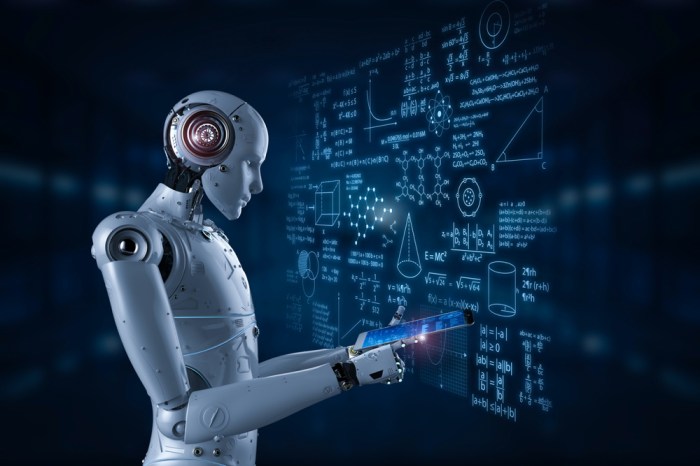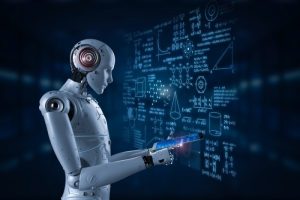
Dive into the realm of Computer systems for artificial intelligence where hardware and software converge to shape the future of AI technology. Get ready to explore the dynamic landscape of AI systems and the key components driving their innovation.
As we unravel the intricacies of computer systems in AI development, brace yourself for a journey through the core elements that power artificial intelligence to new heights.
Computer Systems for Artificial Intelligence

Computer systems play a crucial role in the development and implementation of artificial intelligence. These systems consist of both hardware and software components that work together to enable AI applications to perform complex tasks. Let’s delve into the specifics of computer systems for artificial intelligence.
Hardware Components for AI Systems
Essential hardware components for AI systems include processors, GPUs, memory, and storage. These components are vital for the efficient functioning of AI applications.
- Processors: Different types of processors, such as CPUs and TPUs, are used in AI applications to handle computations efficiently.
- GPUs: Graphics Processing Units are essential for accelerating AI computations, especially for tasks like deep learning and neural network training.
- Memory and Storage: Sufficient memory and storage capacity are crucial for storing and processing large amounts of data in AI systems.
Software Frameworks for AI Development
Popular software frameworks like TensorFlow, PyTorch, and Keras are widely used in AI development to streamline the process of building and training AI models.
- Programming Languages: Different programming languages like Python, Java, and C++ have their own advantages and disadvantages in AI development.
- Neural Network Libraries: Libraries like TensorFlow and PyTorch provide pre-built tools and functions for implementing neural networks in AI applications.
- Operating Systems: Operating systems like Linux and Windows play a crucial role in supporting AI workloads and providing a stable environment for AI applications.
Networking and Communication in AI Systems
Network infrastructure is essential for connecting AI devices and enabling seamless communication between them. Technologies like Ethernet, Wi-Fi, and 5G are used for high-speed data communication in AI environments.
- Data Transfer: Challenges related to data transfer in distributed AI systems can be addressed through optimized network configurations and protocols.
- Communication Protocols: Protocols like TCP/IP and MQTT are used to establish connections between AI devices and facilitate data exchange.
- High-Speed Data Communication: Technologies like Ethernet and fiber optics enable high-speed data communication, crucial for real-time AI applications.
Mobile Computing

Mobile computing has revolutionized the way we interact with technology, enabling us to access information and services on the go. From the early days of bulky mobile devices to the sleek smartphones of today, the evolution of mobile computing has been remarkable.
Evolution of Mobile Computing
- The history of mobile computing dates back to the late 20th century when devices like the IBM Simon Personal Communicator introduced the concept of a touchscreen interface.
- The introduction of smartphones, led by Apple’s iPhone in 2007, marked a significant shift in mobile computing, combining communication, computing, and entertainment in a single device.
- Mobile applications, or apps, have become an integral part of mobile computing, offering a wide range of functionalities from social media to productivity tools.
- Cloud computing has played a crucial role in enhancing mobile capabilities by enabling data storage, processing, and collaboration across multiple devices.
Mobile Computing Devices
- Mobile computing devices include smartphones, tablets, and wearables, each designed for specific purposes and user preferences.
- Smartphones are versatile devices that offer communication, internet browsing, multimedia, and a wide range of apps.
- Tablets provide a larger screen size for better productivity and entertainment, bridging the gap between smartphones and laptops.
- Wearables like smartwatches and fitness trackers offer specialized functions such as health monitoring and notifications on the go.
Mobile Operating Systems
- Popular mobile operating systems include Android, iOS, and Windows, each offering unique features and user experiences.
- Mobile OS platforms have distinct user interfaces tailored to the device’s form factor and user interaction preferences.
- Security features in mobile operating systems help protect user data and privacy, including encryption, app permissions, and secure boot processes.
- App stores like Google Play Store and Apple App Store provide a centralized platform for users to discover and download mobile applications.
Mobile Connectivity and Networking
- Mobile devices support various connectivity options such as Wi-Fi, Bluetooth, NFC, and cellular networks for seamless communication and data transfer.
- Challenges in mobile network infrastructure include bandwidth limitations, signal interference, and network congestion affecting data speeds and reliability.
- Virtual Private Networks (VPNs) encrypt mobile connections, ensuring secure data transmission over public networks like Wi-Fi hotspots.
- Advancements in 5G technology promise faster data speeds, lower latency, and improved network capacity, revolutionizing mobile computing experiences.
End of Discussion
In conclusion, Computer systems for artificial intelligence stand as the backbone of cutting-edge AI advancements, paving the way for groundbreaking innovations and endless possibilities in the realm of artificial intelligence. Get ready to witness the future unfold before your eyes as AI technology continues to revolutionize the world we live in.
User Queries
What are some examples of popular computer systems used in artificial intelligence?
Some popular examples include NVIDIA Tesla GPUs, Google’s Tensor Processing Units (TPUs), and IBM’s Power Systems.
What is the significance of memory and storage in AI systems?
Memory and storage play a crucial role in AI systems by storing and processing vast amounts of data efficiently to enhance AI performance.
How do communication protocols connect AI devices in networking?
Communication protocols establish rules for data exchange between AI devices, ensuring seamless connectivity and information transfer.
What advancements in mobile device technology have impacted mobile computing?
Advancements such as foldable screens, 5G connectivity, and enhanced processing power have significantly impacted mobile device technology.





